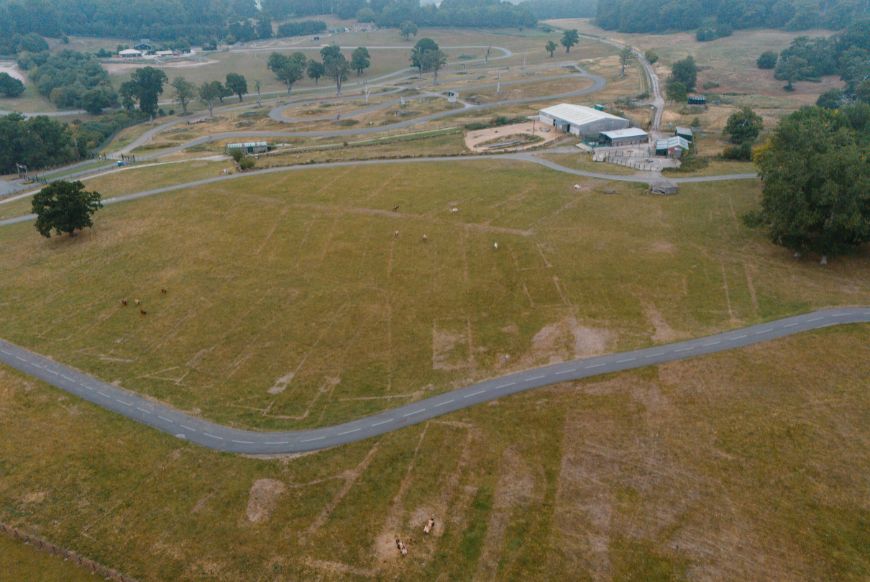The current heatwave has revealed even more signs of centuries past at Longleat in Wiltshire with a rare glimpse of a military hospital and a sweeping carriage driveway.
While the area of the driveway immediately in front of Longleat House has been seen via a drone before during hot weather, this year the long sweep from Lodge Drive is also visible and matches a letterhead used in the early 19th century.
The fascinating glimpse of yesteryear through the parch marks occurs because soil over buried landscape features is shallower than the surrounding area so as the grass dies off, the shadows of what remains below the surface begin to show.

Image - Parchmarks, Military Hospital
Curator Dr James Ford said: “The 18th century sweeping in-and-out carriage driveway once led up to the steps at the front of the house and remained in use until shortly after Longleat opened to the public in 1949.
“It is particularly timely this year as we are showcasing our Regency heritage with our Genteel Tourists exhibition: Visiting Longleat in the age of Jane Austen.
“When you see the sweeping driveway in these pictures, you can imagine the carriages bowling along the driveway before coming to a halt in front of the House.
“In Pride and Prejudice, Austen describes the fashionable Regency pursuit of visiting a grand country house when Elizabeth Bennet and her relatives tour Pemberley, arriving by carriage.
“Our records show similar visits took place at Longleat and the exhibition takes our guests back in time to this tradition. Our House guides have also joined in with some tours in Regency dress and children can get involved by dressing up too.”
As well as the driveway, the heat has shown the parch marks where an American Military Hospital once stood and where the camels now roam; the only surviving building is close to Longleat’s current rhino house.
“The hospital was built to treat casualties from the Allied invasion of Europe and designed to house around 600 patients and staff. It was occupied by the US 216th General Hospital from April 1944 to June 1945, when the 216th moved to a new site in France,” said James.
“The buildings were then home to the Royal Engineers Survey Training Centre until 1949. Daphne Weymouth, the future 6th Marchioness, worked as a librarian at the hospital.
“It’s also 80 years since the patients and staff reportedly celebrated VE Day with villagers on Horningsham common until the early hours of the morning which is also timely as we will be marking this important anniversary at our showcase event Icons of the Sky in September.”
“The war department widened the very narrow lane from Whitbourne Springs from the A362 to allow lorries to access the hospital and the infrastructure was utilised for the later creation of the Safari Park, which celebrates its 60th birthday next year,” he added.
Related
Comments
Comments are disabled for this post.











